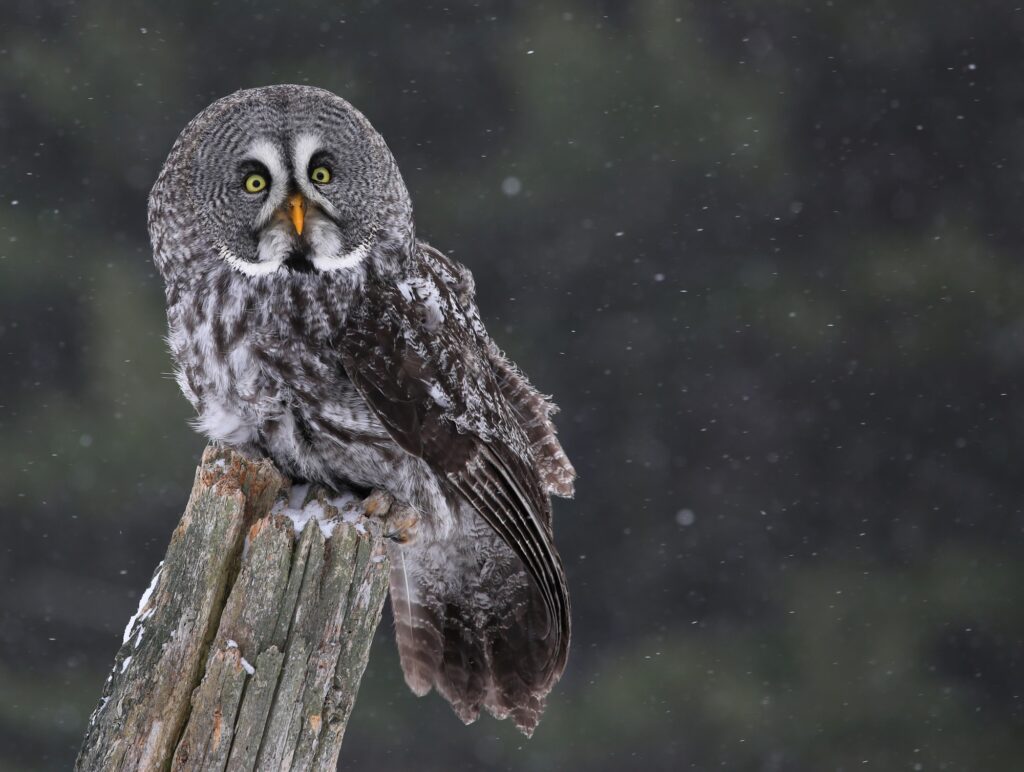Thanks to its oak woodlands and Mediterranean climate, it’s no wonder California is home to 14 species of owls!
The state’s summers are dry and hot while winters are mild; for a wide variety of birds, this makes for an ideal habitat to live in year-round with no need to migrate during the winter months. Not to mention that California also packs a total of 110 state and eight national parks, which provides plenty of space for raptors and birds you don’t usually see on the streets to flutter about.
Whether you’re going to the Golden State for a trip or living there, there’s a high chance you can catch one or two of the 14 species of owls in California. Read on to learn more about every species you’ll spot there.
Barred Owl

- Scientific Name: Strix varia
- Length: 16-25 inches
- Weight: 1-2.75 pounds
- Wingspan: 38-49 inches
Barred owls have white bars that cover their bodies, hence the species of birds’ name. They are year-round residents of California, but only in the northwestern regions. You might occasionally catch one in more central parts of the state, but the odds of that are pretty slim.
Find them spending most of their time near swamps, marshlands, and occasionally woodland areas. These birds have a distinctive hoot that’s used in most movies when an owl sound is needed.
Spotted Owl
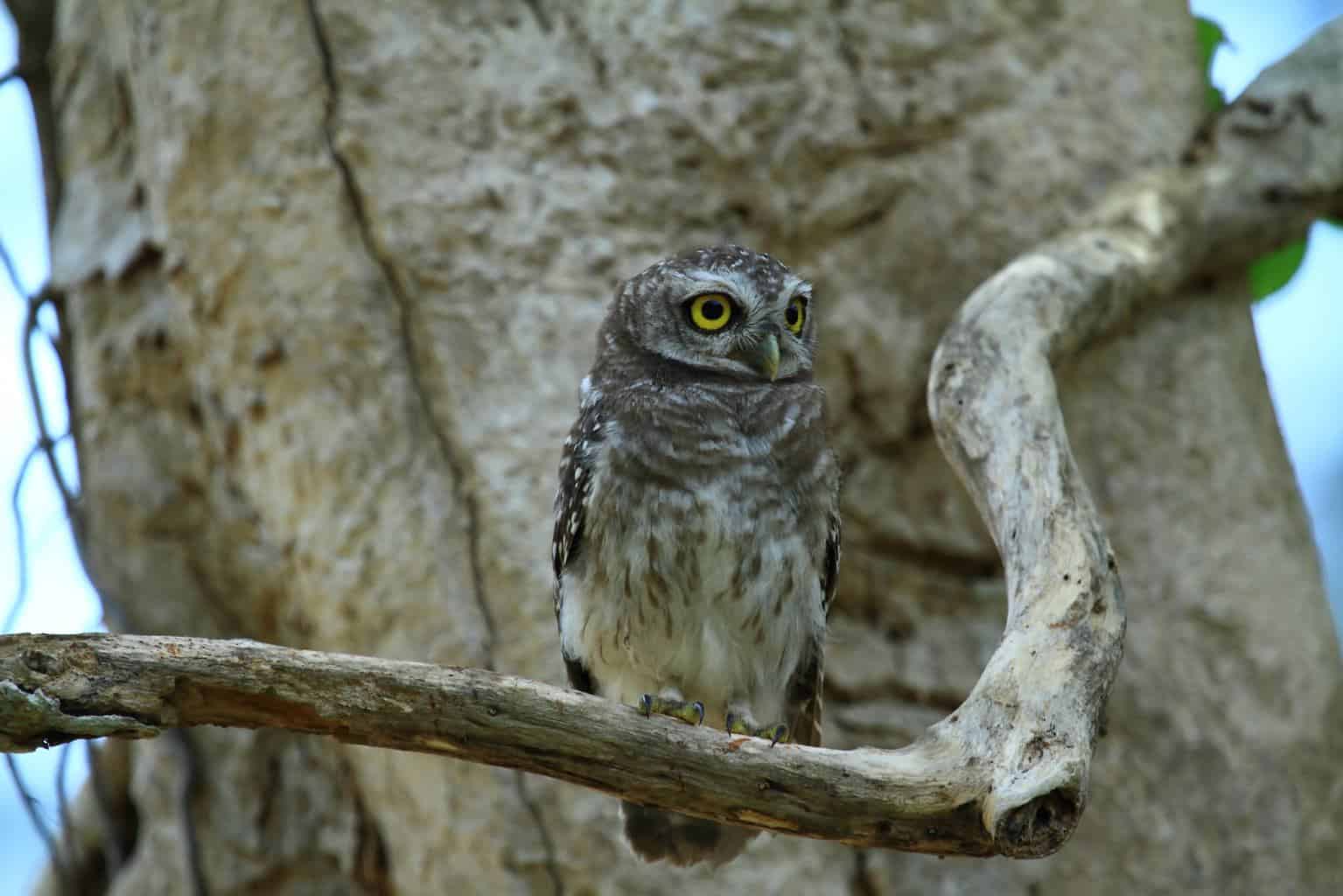
- Scientific Name: Strix occidentalis
- Length: 16-17 inches
- Weight: 1-1.3 pounds
- Wingspan: 45-48 inches
Spotted owls come from the same family as barred owls. Just like typical bickering siblings, the two owl species are continually competing, so much so that spotted owls are becoming endangered because of the barred bird.
These owls spend the whole year in the central and northern regions of California. But as we mentioned before, their numbers are declining, so your chances of seeing one of them are pretty slim.
Barn Owl

- Scientific Name: Tyto furcata
- Length: 13-15 inches
- Weight: 1-1.3 pounds
- Wingspan: 42-43.3 inches
The barn owl is one of the most common owl species in the United States, so it’s no wonder you can find it in abundance in California. It’s also a year-round resident, so the odds of any birdwatcher spotting one or two of them are pretty high.
Barn owls have pale brown or grey feathers on their bodies, and their bellies are covered in white feathers. They have heart-shaped faces that are easy to identify. You may run across a barn owl or its nest in grassland areas, and note that they’ve mostly been sighted on California’s west coast.
Western Screech-Owl

- Scientific Name: Megascops kennicottii
- Length: 7.5-10 inches
- Weight: 3.5-11 ounces
- Wingspan: 22-24 inches
Western screech-owls are strictly nocturnal, so your only chance to see them is at night. Your mission won’t be easy, though. These owls have grey feathers that help them stay camouflaged against tree trunks.
Despite their late-night habits and impressive camouflage skills, the western screech-owl is pretty common in California, and they spend the whole year there. You can see them in nearly all the state’s regions, but that’s only if you’ve got a little bit of luck on your side.
These owls prefer staying near canyons and along coasts, though, so you’re less likely to see them in California’s central areas.
Great Gray Owl

- Scientific Name: Strix nebulosa
- Length: 25-33 inches
- Weight: 1.5-4 pounds
- Wingspan: 60 inches
The great gray owl is the largest owl species in North America, and we’d like to believe the reason owls are perceived as scary is because of this species. With their deep eyes and round, grey faces, they’re likely to give someone a pretty serious scare if they appear out of nowhere.
Despite that, barred owls and great horned owls are reportedly scarier.
Great gray owls spend the whole year in California, particularly in the northeastern areas. They’re most active during the night, except during their mating season when they hunt all day.
Great Horned Owl

- Scientific Name: Bubo virginianus
- Length: 17-25 inches
- Weight: 2.5-4 pounds
- Wingspan: 36-60 inches
Great horned owls are the most common species in the U.S., and they’re permanent residents of California. You can find them in both dense woodlands and suburban areas, including one of the city parks.
This species of owls is known for its aggressive behavior towards other prey birds, including owls. They may even kill their own if they have to.
Snowy Owl

- Scientific Name: Bubo scandiacus
- Length: 20.7-25 inches
- Weight: 3.3-4 pounds
- Wingspan: 47-60 inches
Snowy owls are among the most beautiful species of owls on Earth. Their bright, white color makes them very easy to identify, and their large bodies make spotting them even easier to do.
You’d be lucky to catch a snowy owl in California since they only spend the winter there, and they stay near the northwest area.
If you do come across one of these owls, bear in mind that they’re very aggressive. Their territorial instincts may drive them to attack a human if they see one close to their nests. These birds seem pretty fearless, as they reportedly attack arctic wolves, too!
Northern Saw-Whet Owl

- Scientific Name: Aegolius acadicus
- Length: 7-8.3 inches
- Weight: 2.3-5.5 ounces
- Wingspan: 16.5-19 inches
Northern saw-whet owls are pretty small compared to other species. They have round heads and a pair of circular orange eyes that make them pretty easy to identify.
Saw-whets only nest near dense woodlands, making them at risk of being eaten by larger species, like the great horned owl.
You’ll mostly see them in California’s eastern and northern areas, where they reside permanently.
Flammulated Owl
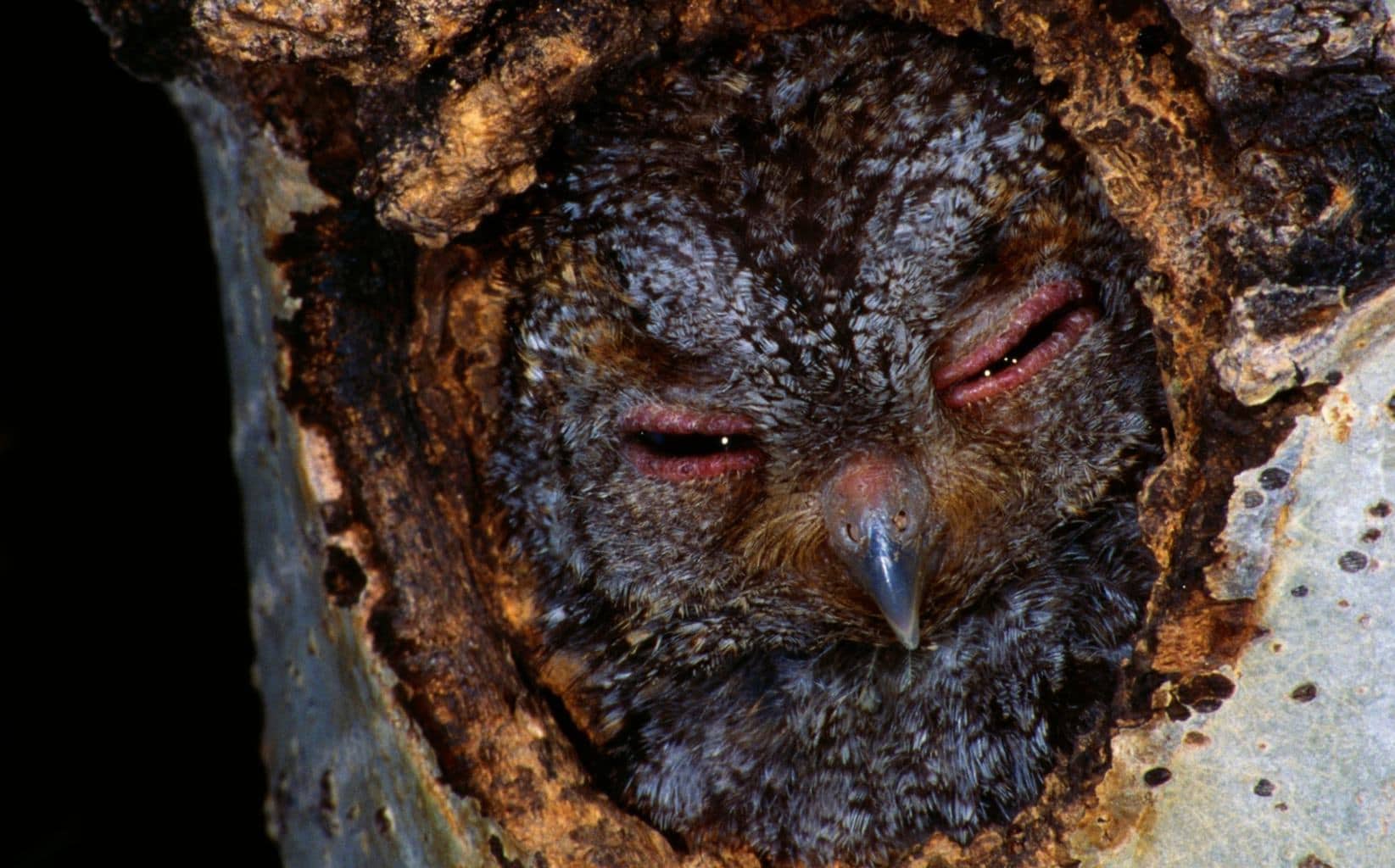
- Scientific Name: Psiloscops flammeolus
- Length: 5-6 inches
- Weight: 1.8-2.3 ounces
- Wingspan: 14 inches
Flammulated owls are hard to catch sight of for many reasons. For starters, their bodies are so small, you may not notice them if it’s dark. Plus, they’re only in California for part of the year.
These owls have brown feathers with some tufts of orange here and there, and their eyes are wide and black, making them even harder to see as they fly through the night air.
Flammulated owls only spend their breeding season in California. They’re reportedly found in large numbers near the eastern border.
Short-Eared Owl
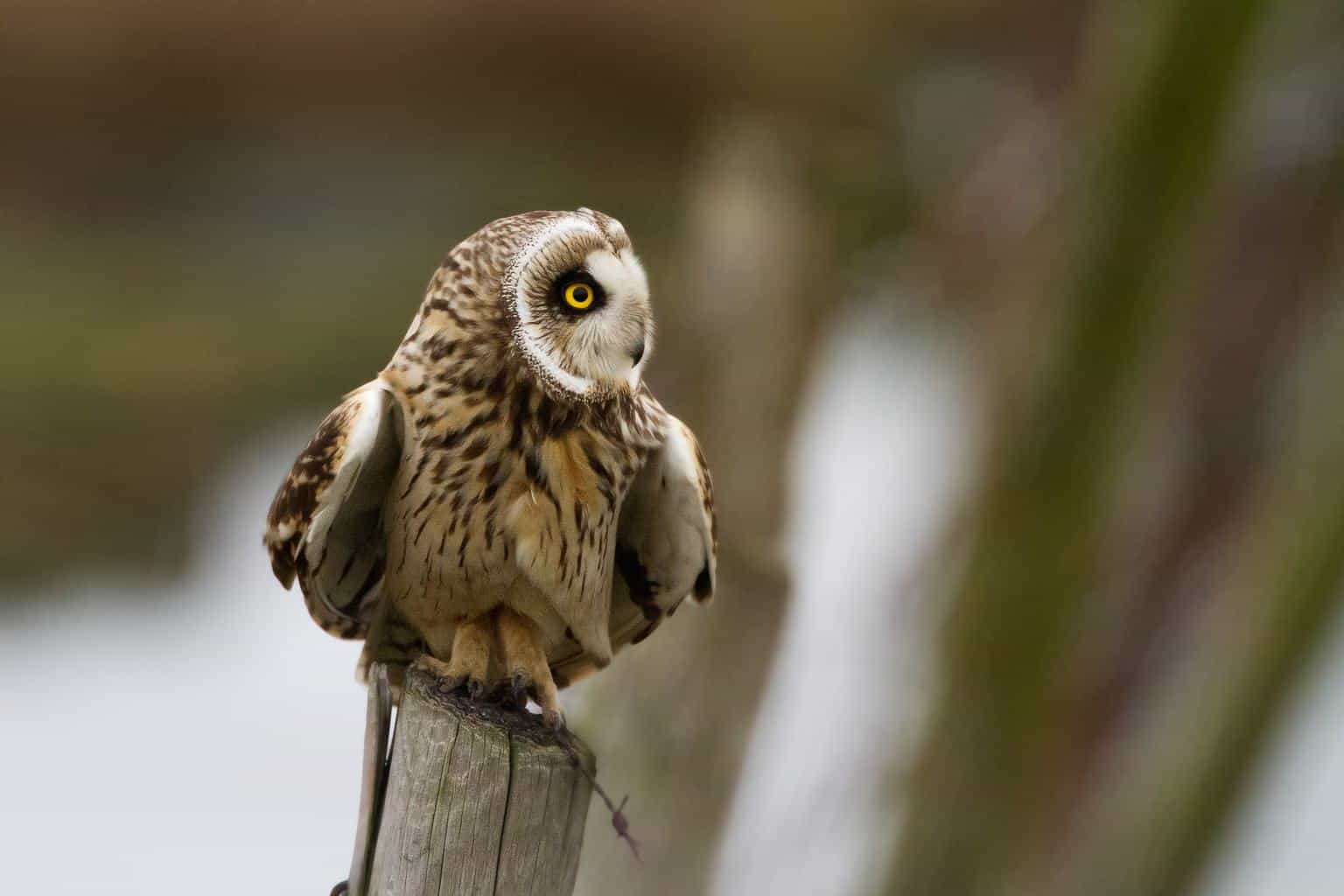
- Scientific Name: Asio flammeus
- Length: 13-17 inches
- Weight: 7.3-16.8 ounces
- Wingspan: 33.5-40.5 inches
Short-eared owls get their name from the tiny tufts of feathers that can be seen on their heads. Their feathers are brown with light spots, and their bodies are an average size.
These owls are relatively easy to catch because they’re mostly active for the whole day, spending most of their time in open grasslands.
In the state’s southern areas, short-eared owls are only seen outside the breeding season. Meanwhile, they’re common residents of the state’s northern areas year-round.
Long-Eared Owl
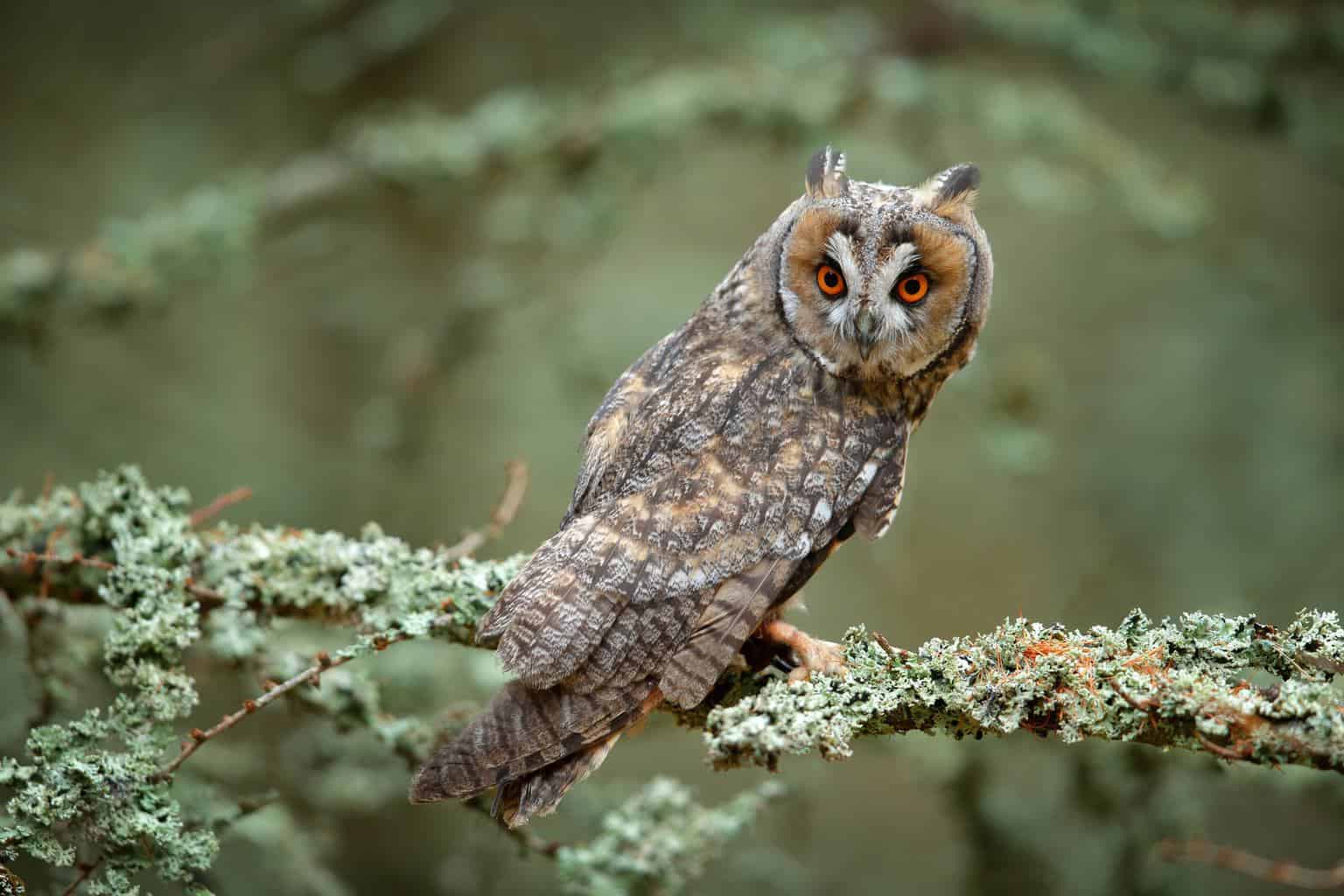
- Scientific Name: Asio otus
- Length: 13.8-15.8 inches
- Weight: 7.8-15.5 ounces
- Wingspan: 35.5-39.5 inches
Long-eared owls have visible ear tufts on the tops of their heads, which is where they get their names. These tufts make them pretty easy to identify, along with their round, orange faces.
You can find long-eared owls in open grasslands and woodlands, and they prefer to stay in large areas, regardless of the type.
Although some of these owls spend the whole year in the Golden State, you’ll likely see them outside of the breeding season only. They’re found in abundance in the central regions.
Northern Pygmy-Owl

- Scientific Name: Glaucidium californicum
- Length: 6-7 inches
- Weight: 2.2-2.5 ounces
- Wingspan: 15 inches
Northern pygmy-owls are a favorite of many birdwatchers because they’re cute, fluffy, and small. Plus, their brown and white feathers are pretty and their faces are tiny.
The northern pygmy-owl prefers elevated areas, and it spends most of its time in woodlands. These owls hunt by day to avoid being attacked by larger, more aggressive owl species at night, so your chance of spotting one of these birds is pretty high.
Although pygmy-owls are permanent residents of California, know that they’re only found near the eastern and northern regions, so if you’re searching for one, start there.
Burrowing Owl
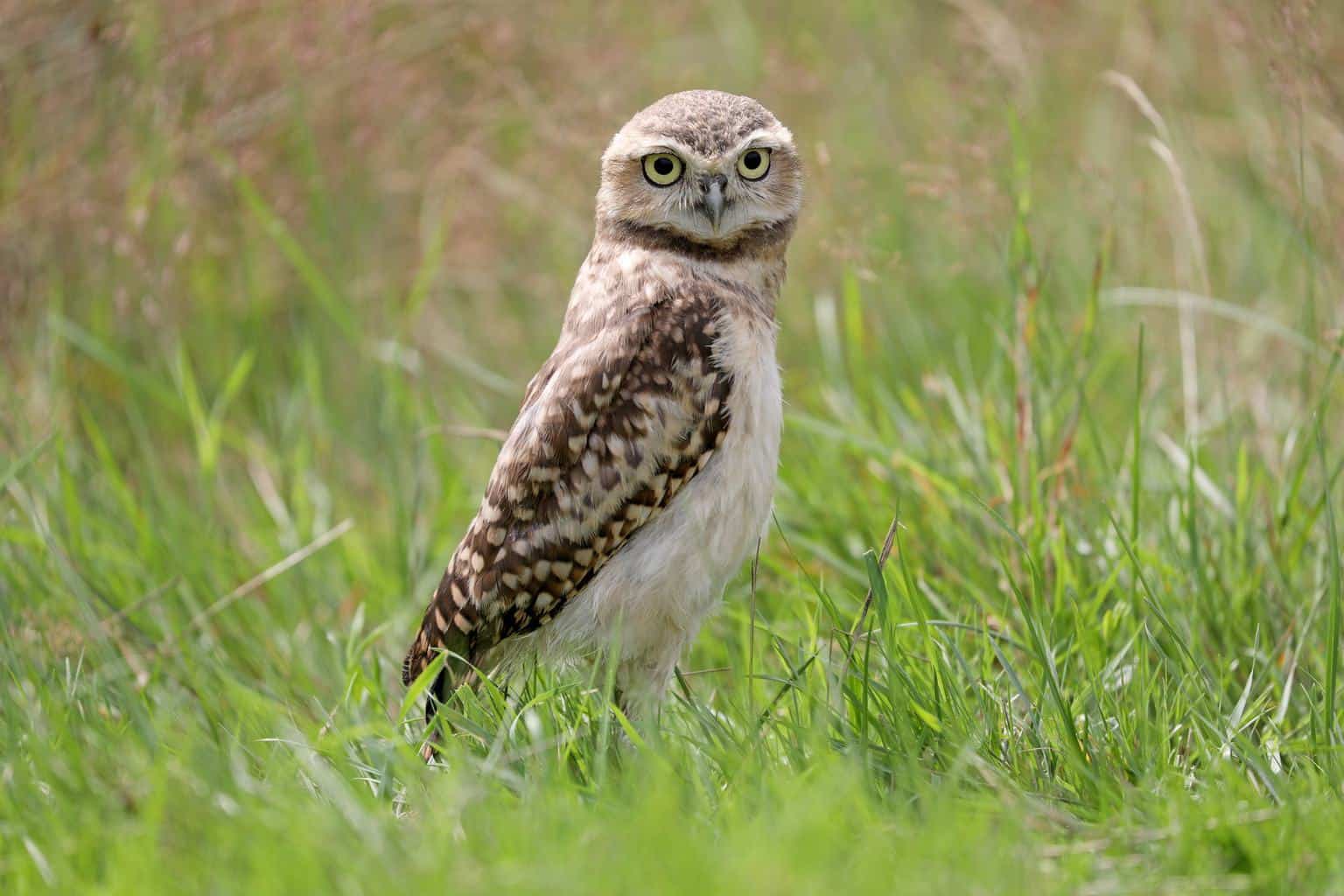
- Scientific Name: Athene cunicularia
- Length: 8-11 inches
- Weight: 5.5-8.5 ounces
- Wingspan: 21-24 inches
Burrowing owls are permanent residents of California’s southern areas, but during their breeding season, you’ll find them in the northern area of the state.
These owls spend their time in open grasslands, and you may come across them in suburban areas. They’re also known to make appearances around cemeteries — pretty eerie, isn’t it? This species is most active throughout the day, so you may catch them while it’s still light out, as opposed to most other species.
Elf Owl
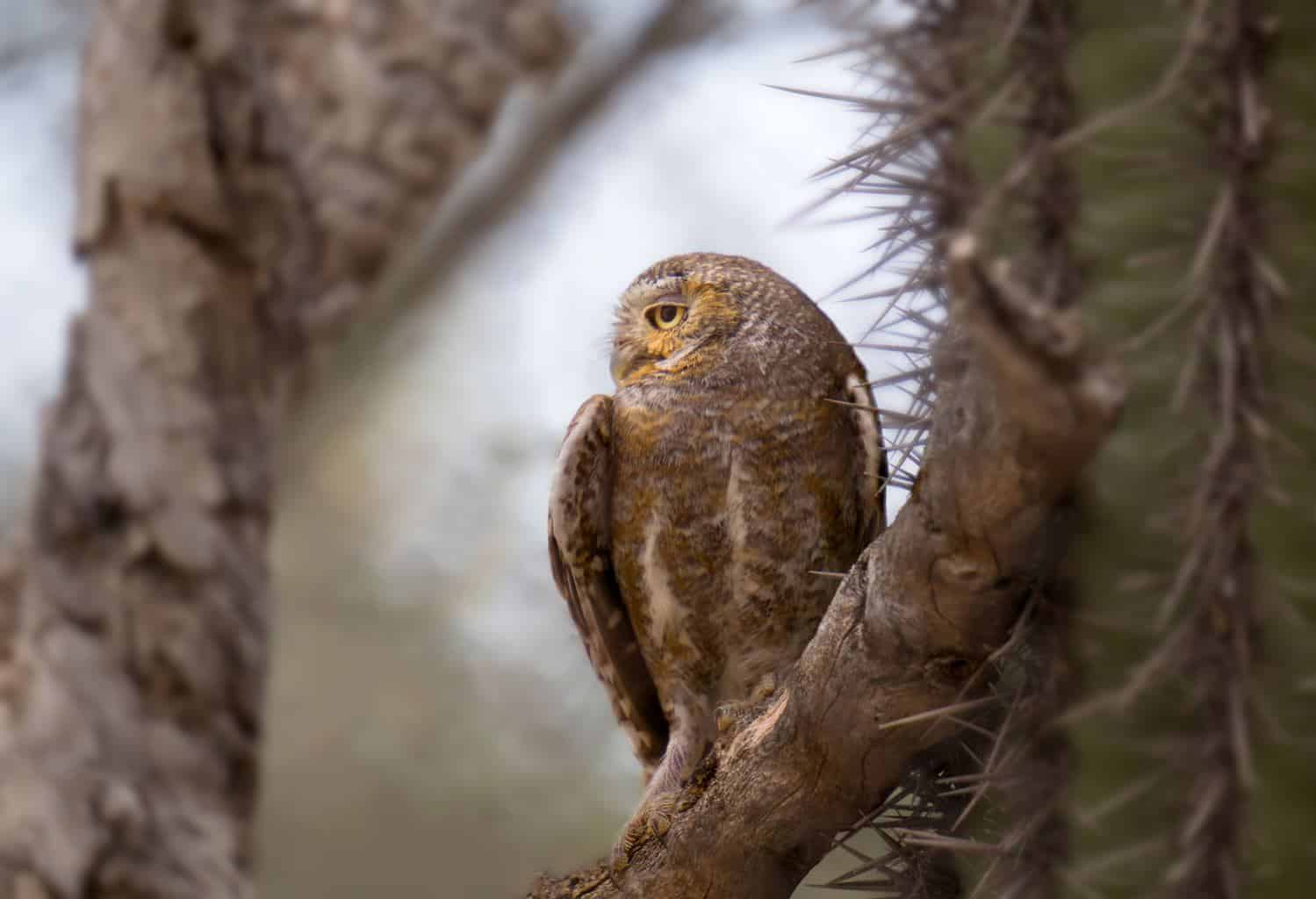
- Scientific Name: Micrathene whitneyi
- Length: 4.7-6.5 inches
- Weight: 1.4-2.2 ounces
- Wingspan: 10-10.5 inches
Due to their tiny size, elf owls are frequent victims of larger species’ attacks. That’s why they developed the ability to play dead whenever they sense danger is near.
These owls only nest in abandoned woodpecker holes, and they may also build their nests in cacti to prevent prey animals from coming near their young.
The elf owl spends its breeding season in California, particularly around the southern areas. It only relies on bugs for food, and it’s well-adapted to humans being around.
Closing Thoughts
Looking for owls in California proves to be a fun experience for avid bird watchers, thanks to the abundance of the state’s prey birds. The majority of the 14 species you’ll find there are permanent residents, increasing your chances of seeing them there.
You don’t want to miss any of the state’s other interesting birds, so take a look at this list of the woodpeckers you’ll find there, too!

